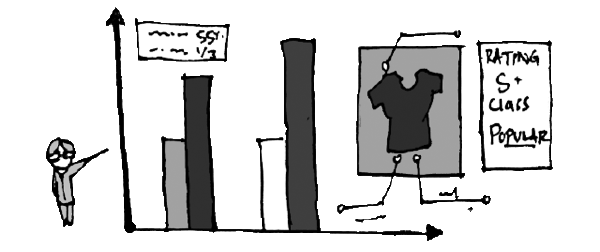

Aragon parent Pam McCarthy-Hudson works as a consultant in the textile and fabrics industry and has first-hand experience with the source of trends. She describes, “Fashion trends originate in key cities [such as Paris, Florence and London].” In those cities, shops display a variety of colors and patterns. Designers flock to these key cities to shop the stores and seek to create trends and introduce them into their designs.
Working in the shifting business of trends means knowing your market and demand. McCarthy-Hudson explains, “[Business consultants and executives] must know the trend preferences of their customers … to [predict] future popular trends.” By combining past knowledge about consumers and new trend ideas from key cities, companies are able to stay fashion-forward and trendy and therefore attract business.
As evidenced by the popularity of chokers, many trends repeat themselves. “Basically, trends are a pendulum … they swing back and forth throughout history,” summarizes McCarthy-Hudson. This is the reason for trends reemerging from generation to generation, and for the fluctuation of certain patterns and colors in and out of style.
Celebrity fashion icons that are generally regarded as trendsetters are not responsible for creating the trend, but rather for bringing it to the public. McCarthy-Hudson elaborates, “Being a celebrity trendsetter is all about … how you put [other designer’s looks] together … [non-designer] trendsetters are people with visibility.”
AP Psychology teacher Carlo Corti agrees, “The amount of connections [trendsetters] have can begin something. Companies … try to get these people to use their products and wear their clothes.”
This is prevalent in high school culture, as our consumer habits are influenced by what we see in media and celebrities. Companies target visible individuals from multiple facets of life to diversify their consumer base. “By having these spokes go out to these different parts of society, the trend can emerge in a lot of different places and take off,” says Corti.
Even though the most common trendsetters are actors and musicians, others, such as athletes, can have strong effects on fashion. McCarthy-Hudson gives the example of Stephen Curry, who, through his shoes, has helped push the Under Armour brand into vogue.
The psychology of a trend relies on the relationship between the psychology of the individual and the group. The feeling of inclusion and being part of a group through an associated look or item gives people security. Personality traits and values also dictate one’s likeness to fall into trends and conform. Corti theorizes, “If you are a little more individualistic, a little more skeptical of society, skeptical of people around you, you’re far less likely to conform … people who depend on others to say ‘hey, you were great’ are going to conform a lot.”
Trends and their formation are continuous cycles that have rooted themselves into modern culture and affect our daily interactions. Trends unite through conformity, but can exclude if used negatively in group scenarios. Sourcing these trends and understanding the processes can alter how one approaches trends in the future. In others, staying trendy means staying informed.




